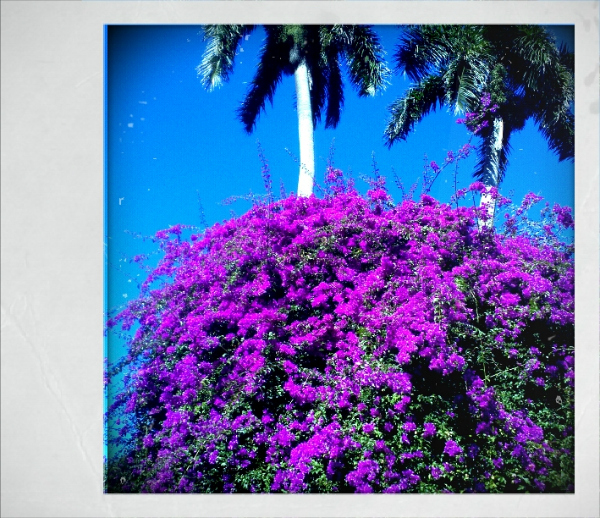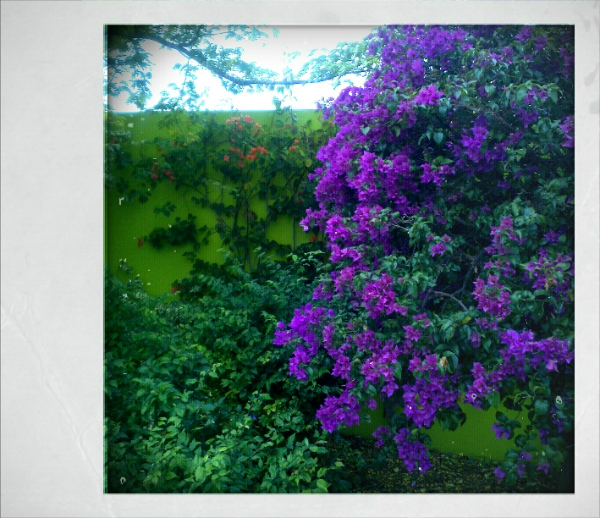Part fiesta, part innocent looking muse, the bougainvillea is a genus of flowering plants native to South America that has a cheerful and showy disposition when in bloom. The normally colorful 'flower' of the bougainvillea is not the actual flower but is in fact a modified leaf. The actual flower is quite inconspicuous, being small and normally white, forming in clusters that are surrounded by brightly colored bracts in various shades depending on the variety of Bougainvillea. The bract color can range from pink, red, yellow, white, purple and the popularly cultivated color magenta. Not only is the color of these plants when they are in bloom spectacular, but the visual texture of the bracts play just as much a part of the plants fascination. Each bract resembles semi transparent tissue paper, giving it its delicate nature and its common name 'paper flower'.

Photo by Tara Heibel
Bougainvillea thrive in heat and sun. Give them full to part sun with at least 5 hours of direct rays in order for them to really prosper. They can adapt to part or light shade but the bloom will be lacking and more than likely not flower at all. The bougainvillea are drought-tolerant once established, but when used as a houseplant or annual you do need to be on top of the watering. Let the soil go slightly dry in between watering, but make sure you give it a good drink when it is due. You can tell if your plant is ready for a watering because it will begin to wilt. Do not wait too long to water it when you start to see it wilt, or the beautiful paper like bracts could drop and you could lose the plant all together. They will drink quickly when it is warm and less when it is cool so keep this in mind when seasons change or when moving your plant indoors. They enjoy a very well drained soil so never let the roots sit in water. They are heavy feeders and love their micronutrients, especially during bloom. When your bougainvillea is not in bloom you can slow down the fertilization to about half what you were feeding when it was in bloom, especially if it is a cooler location.
One of the biggest things you have to remember about bougainvillea is that it only blooms on new growth. This means developing a habit of pinching and pruning will keep it looking its best. Pinch the soft tips of young plant stems to promote growth from the interior of where it was pinched. The ideal time to pinch off or prune is after the flowers and colorful brachts have faded. They actually accept pruning quite well, and in warmer climates where the plant is established it can take hard cut backs in early summer to foster growth.

Photo by Tara Heibel
Even though warmer climates have the privilege to plant bougainvillea as a landscape plant, this does not mean that those of us in cooler climates should not let this plant grace our presence. It can be planted as a vine to naturalize into a hedge or trellis and can also be a specimen piece and trained into tree form. The bougainvillea can be grown outside in containers or hanging baskets gracefully cascading during the summer months and brought inside during the winter. When using the it as an annual in northern climates during the summer it gives a feeling of the tropics without being overt about it. The bougainvillea makes a great show and tell plant, but because of the thorns, without the touching -- keep this in mind when placing your 'paper flower.'